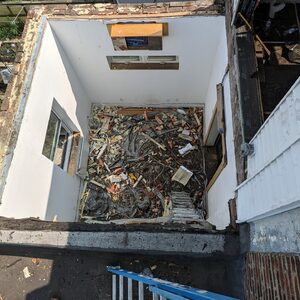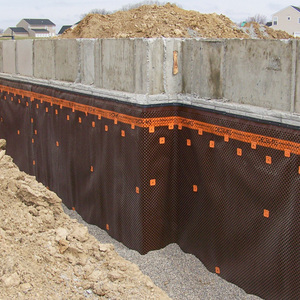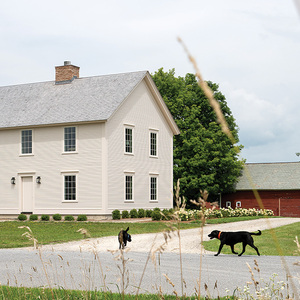Insulating a cvented crawl space
I live in a 100-year old house in the SF Bay area. During a renovation about 15 years ago, an unfinished basement was put under about 1/2 of the house. The other half is still crawl space. The first floor sits about 24″-36″ above grade. There are 8″ x 14″ perimeter vents roughly 12″ above grade, every 10″ around the house.
The weather here isn’t terrible (nights get to ~35* at worst), but it rains throughout the winter. However, our heating bills are astronomical. I’m looking to improve the energy efficiency of the house, and I am very aware that the basement is very cold.
I’ve seen several articles that say to insulate the perimeter walls (not the floor) and let simply accept the fact that the basement is part of the house. I’m OK with that concept, but what about the perimeter vents? The crawl space is bone dry right now, but I don’t want to create a warm swamp by sealing it up.
What’s a guy to do?
Thanks.
DJS
“Honey, will you please make some sawdust and track it across the carpet?”
“Yes, dear…”



















Replies
What is the floor of the crawl?? dirt? Concrete??
Is the basement floor concrete?
Rich Beckman
This signature line intentionally left blank
The crawlspace floor is dirt. The basement is concrete. Both areas are nice and dry, even during the rainy season."Honey, will you please make some sawdust and track it across the carpet?"
"Yes, dear..."
"to create a warm swamp by sealing it up"In order to create a warm swamp by sealing the vents, there has to be moisture coming from somewhere. At the bottom of the house, the principle source of moisture is almost always the ground.You can put a plastic vapor barrier in the crawl space to keep the water out. The basement floor is trickier.It all looks dry, but tape a sheet (just a couple of square feet or so) of plastic to the concrete floor for a day then pull it up. If the underside is dry, then you are probably fine.If you are still wary of it, seal the vents with plastic and tape for a year and see what happens down there. If the moisture is uncontrollable, pull the plastic off. If it isn't, seek a more permanent method to seal the vents.Having said all that, I agree with Riversong that you'd reap bigger harvests from work in the attic.
Rich Beckman
This signature line intentionally left blank
The first floor is partially insulated. The house was originally a 1-story, and a second story was added about 15 years ago. When that happened, any walls that were opened were insulated. My guess is that about 40% of the perimeter walls on the first floor are insulated.
The entire second story is fully insulated, incl. walls and all attic space. (blown cellulose with fiberglass bats in the attic, fiberglass in the walls).
The basement has a gas-fired forced air furnace and also a gas hot water heater. There is a separate furnace in the attic that heats the second story. All ductwork is insulated. Yes, I meant 10' spacing on the vents.
I'm working on the other obvious things- leaky windows, etc. Just thought I'd look at this one too. There is enough of a temp and pressure difference that I have a noticeable draft from under the basement door (yes, I'm sealing that up too). The draft (and lack of floor insulation) is what made me think about how to keep that space warmer.
thanks.DJS"Honey, will you please make some sawdust and track it across the carpet?"
"Yes, dear..."
Since you've got heating equipment in the basement, you might want to close the basement vents in the winter and open them up in the summer when you don't want the utility heat.
Riversong HouseWright
Design * * Build * * Renovate * * ConsultSolar & Super-Insulated Healthy Homes
The basement has a gas-fired forced air furnace and also a gas hot water heater.
OldSaw,
It is not likely that the furnace and water heater are sealed combustion.
I would be cautious about sealing the basement unless you can isolate the appliances and provide them with combustion air or replace them with sealed combustion units.
"all attic space. (blown cellulose with fiberglass bats in the attic, ..."Cellulose makes for a wonderful warm blanket, but when it is blown into an attic, it does not do much about air flow.On a still cold day, open a second floor window. If air is blowing in, then there is still too much air moving from the living area into the attic. Every cubic inch of air that is blowing in somewhere is balanced by a cubic inch of air leaving at the top of the house. If you open the second floor window and the air blows out, that tells you that there is very little air leaving via the attic.This is a pain to deal with after the cellulose is blown in, but it could be an important component of warming the house.Most attic floors are full of holes. Holes drilled in the tops of walls that are not quite filled with wires or plumbing. Holes where ductwork passes through the floor. Holes around chimneys. Long narrow holes at the tops of walls where the framing has shrank away from the drywall. Holes where ceiling lights and fans are mounted in the living area below. If you have balloon framing, then you might have nothing at the tops of the walls (one would hope they covered that before blowing in the cellulose.Most of these holes can be filled with a bit of spray foam. Some larger holes might be filled with a plastic bag filled with cellulose stuffed into them (foamed in?). Sometimes pieces of metal, esp. around chimneys (with appropriate heat resistant caulk).Filling these holes with the cells already up there is a real pain, but it might be worth it if the house is really drafty.Afterwords, it might pay to blow a few more cells to "heal" the damage all that activity will have done to the existing layer.
Rich Beckman
This signature line intentionally left blank
There are 8" x 14" perimeter vents roughly 12" above grade, every 10" around the house.
You can't mean every 10". Perhaps every 10 feet?
What is in the basement in terms of mechanicals? Heating plant, ductwork, water pipes, water heater?
Is the 1st floor currently insulated? If so, with what and how much?
Without answers to those questions, I would suggest that since your basement and crawl space are dry it might make more sense to focus on other heat loss areas first.
Start by sealing around leaky windows and doors, foam gaskets in electric boxes, sealing attic penetrations, adding attic insulation.
Solar & Super-Insulated Healthy Homes